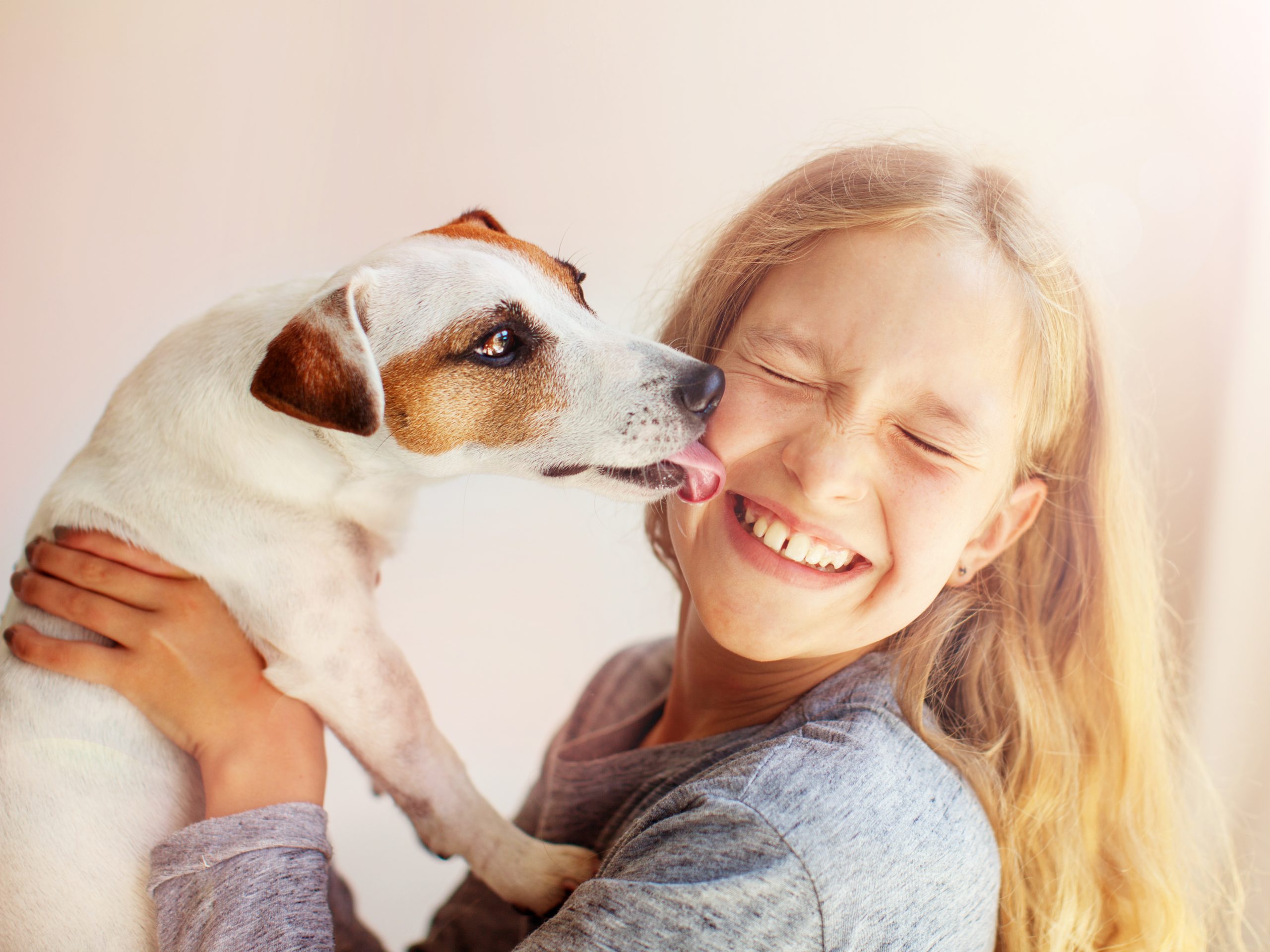
A summer of walks in the park, beach trips and days out in the country becomes a disaster as your child refuses to go where they might meet dreaded dogs. Read on to find out how you can help your child overcome a fear of dogs.
Why is my child scared of dogs?
Growing up with dogs is a great way for children to learn how to treat and respect animals and they can be a fun, loveable family pet. However for some children dogs are way scarier than tigers, spiders or snakes. They live in fear of a dog coming sprinting towards them, ears flapping, desperate to say hello or a playful puppy jumping all over them, barking and wanting to play.
It’s not always clear why a child is scared of dogs. They may have had a bad experience with a dog who has tried to bite them, or an excitable puppy might have scratched them when trying to play. If a child knows an adult who is scared of dogs they may copy their fear. Sometimes there is no reason for it, a child just knows that dogs frighten them.
It’s important to acknowledge how your child feels, however silly you might think it is. Don’t rush out and buy a puppy or take your child to meet lots of dogs because you think that will help them. Yes, all dogs are different and playing with a friendly dog may help your child in the long term. But go slowly, it will take time for your child to get used to dogs and learn how to handle their fear.
Be a responsible dog owner
Often dog owners can find it difficult to appreciate that other people don’t think their dogs are as adorable as they do. They will let their dogs jump up at children, telling them they only want to be friendly. This can be really scary for a child who may often be a lot smaller than the dog.
Never let your dog jump or bark at strangers, especially children, when you’re out and about. If you can’t trust your dog not to do this then you should keep it on a lead in public places
What can I do to help my child overcome their fear of dogs?
Out and About
There are things that children can do to stop dogs bothering them. If you can teach your child these skills then you may soon be able to handle going to the park or for long country walks without the constant fear of meeting a dog.
Although the first reaction of someone who is scared is to scream, wave their arms or run away, try to teach your child not to do this. It can make a dog scared and they will start to bark or become aggressive. Teach your child to pretend to be a tree when they meet a dog they don’t know. This can be a fun game and helps children learn to turn away from the dog, stand still and keep their arms by their sides. A dog will usually ignore someone who behaves like this and the child will be able to walk away.
Children are often scared of dogs because their parents or another adult they know are scared too. If this is the case for you then you are going to have to be brave! Learn with your child and practise walking calmly together if you see dogs out and about. Your child will enjoy doing this if you are doing it with them. Try not to say negative things about dogs around your child as this will only make things worse.
If you know someone with a friendly dog then ask them to help you. Go to a park and keep the dog on a lead, then take it on a walk past the child so they can see that nothing scary happens if they stand still. When the child feels more confident you can try doing this with the dog off the lead.
Look for areas where dogs have to be walked on leads so your child can get used to meeting dogs without the risk of them running up to them. Make sure that you tell owners if your child is scared so they can move their dog away if they try and play.
At Home
Once your child feels happier meeting dogs on leads when you are out then you can try introducing them to a dog at home. Only do this if you know someone who has a friendly dog who is good with children. Make sure the child and the dog get to know each other slowly and gently, perhaps just encouraging the child to let the dog sniff them on the first meeting. Explain that dogs say hello with their noses so they don’t get a shock when they get a wet nuzzle!
You could keep the dog behind a stair gate for the first few visits so that the child can get used to being in a room with them without worrying that they will try and touch them.
If your friendly pooch will cope with being dressed up then you can put a funny hat, wig or dog coat on them – this will make the dog much less scary!
After a few meetings, you can encourage your child to throw some treats or a ball for the dog so they can see how much fun playing with them can be.
Try and get more dogs into your child’s life in a fun and happy way. Have lots of doggie books, films and toys for them to play with at home and use fluffy toy dogs to act out how to behave if a dog comes bounding up to them when they’re not expecting it.
At school
The Dogs Trust offers free workshops to help children that are nervous around dogs and you can ask them to come to your school or nursery to speak to the children. http://www.bedogsmart.org.uk has more information.
So if your child’s fear of dogs is making it impossible for you to go anywhere or keep the family entertained during holidays and weekends, don’t worry, it can get better.
The important thing is to take your time teaching your child how they can change their behaviour to act calmly around dogs so that they leave them alone. Slowly your child will learn that dogs aren’t as scary as they first thought, and in time may even be asking for a puppy of their own!
This article was written by our resident vet.
